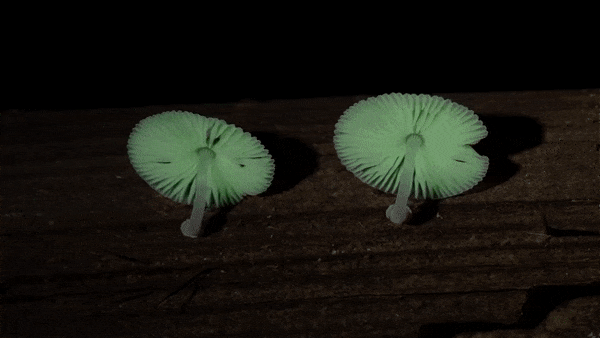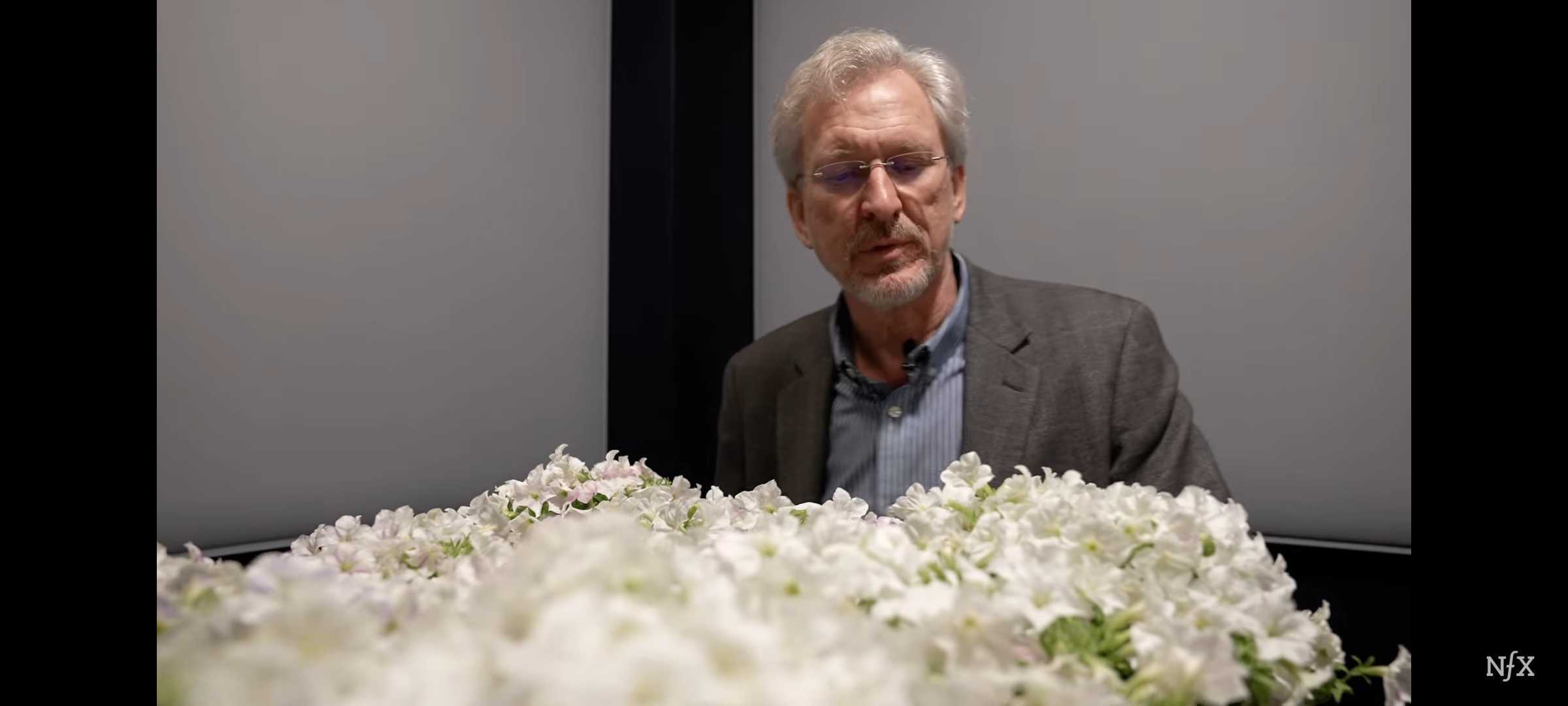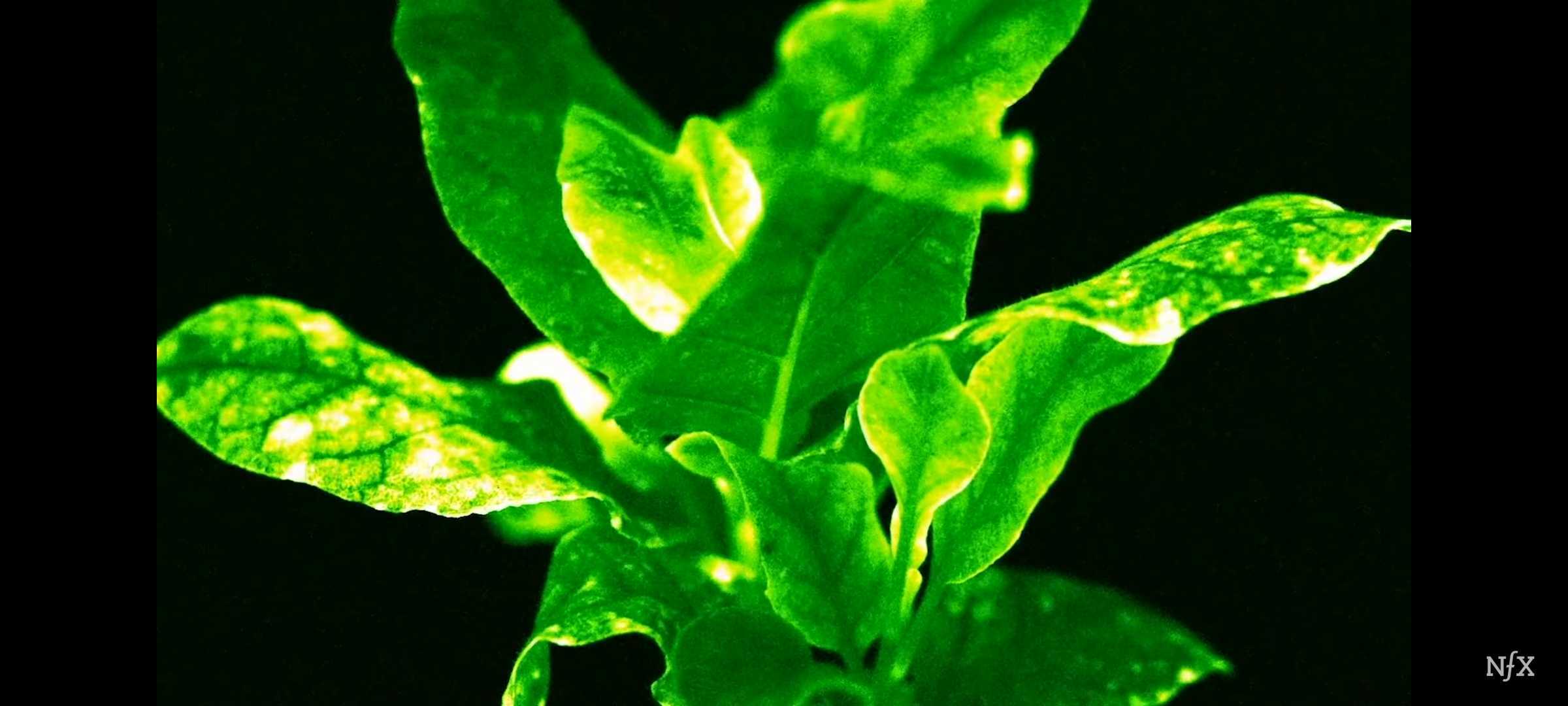Plants that glow in the dark seem like something you can only find in Avatar or some post-apocalyptic movie.
And yet, they are the real thing and scientists have been trying to commercialize glowing plants ever since Keith Wood introduced the first one over 30 years ago by using genes from fireflies. (1)
The light was dim, but it was there.
However, these plants couldn’t glow on their own. They had to be sprayed with luciferin from fireflies in order to produce a light luminescence.
Later attempts have also failed to be commercialized because scientists simply couldn’t produce plants that glow on their own. And that’s what we gardeners want.
They had to be submerged in a liquid containing firefly luciferin and could light up for a few hours, but that was it. (2) Not to mention that these processes were expensive and poisonous to plants.
Another way of creating luminescent plants is to use genes from marine bacteria that cause them to glow on their own. (3)
This was a first breakthrough since plants didn’t need to be submerged in any kind of liquid or sprayed with anything. And yet, it was also not suitable for commercialization because it was difficult to achieve and didn’t produce much light.
In 2013, A. Evans started a Kickstarter campaign to create luminescent plants to replace electrical lighting, only using different bacteria. And anyone who donated money to this campaign was supposed to get seeds from these glowing plants.
But this company couldn’t get any closer to the solution because creating glow-in-the-dark houseplants was much harder than it seemed.
However, in the novel research, scientists discovered how to use a caffeic acid cycle from glowing fungi and integrate it into plants they want to light up. (4)
Karen Sarkisyan, a co-founder of Light Bio, together with Wood and a whole international team, identified a mushroom called Neonothopanus nambi and its glowing enzymes, inserted them into tobacco plants, and got them to glow.
They used these plants because they grow vigorously and quickly saw results. The end result were luminescent tobacco plants with a glow in their roots, stems, leaves, and flowers.
It is this amazing metabolic compatibility between these fungal genes and the plants that makes this work, maintains Wood.
Both the glowing mushroom and plants have caffeic acid, only N. nambi has four enzymes that transform caffeic acid into luciferin, resulting in its green glow.
The plant that the Light Bio eventually created – glowing petunia – has those mushroom genes that produce these enzymes responsible for luminescence.
It contains DNA from this bioluminescent mushroom and emits a gentle light in all its growth stages. Although, the flowers are especially glowy!
Sarkisyan mentioned that these plants glow both in the dark and in the daylight, which gives them even more interest than the original glowing mushroom could ever hope for.
And just last month, they got approval to sell their glowing petunias in the US by the USDA, who found that they don’t pose an increased risk of pest and disease issues to other crops and plants. (5)
The company is planning to start shipping these miracles of nature by the beginning of next year.
It’s the kind of thing that people have been talking about forever. People have wanted glowing plants, but it just hasn’t been possible, says Wood.
Now it is, and genetic modification isn’t a thing of the past. There is plenty of genetically modified food in the US only that increase the overall yield, but there aren’t that many ornamentals. (6)
However, blue roses and various purple carnations have made their way onto the market. (7,8).
But there is one thing about bioluminescent plants that could negatively affect the ecosystem. They could potentially interfere with a normal cycle of insects, their migration, reproduction, etc., causing issues in biodiversity.
Of course, it really depends on how many plants you grow because nighttime illumination due to artificial lighting far exceeds light emission from the auto-luminescent petunias, claims Light Bio in their application to the USDA.
But truly the best part of all this is that these plants are available to use and you can reserve your Firefly petunia as we speak. There are thousands of reservations already, so don’t wait for too long.
The plan is to first sell these plants online come next spring and then expand into nurseries.
Sarkisyan and Wood are working on creating different glowing ornamentals. Wood mentions it’s only a matter of time until they will be available in other colors, not just green.
And yet, there are always critics who doubt the usefulness of these plants and wonder what they could do that regular plants couldn’t.
For one, they can light up the dark and replace harsh artificial lights. Also, they are really cool. I mean, who wouldn’t want a glowing plant in their home?
What we do in a broad sense at Light Bio is bring a marriage between the remarkable natural diversity of bioluminescence that we find in all kinds of things; in fish and fireflies and, of course, mushrooms… and marry that natural diversity with synthetic biology, mentions Wood.
References:
1. Ow, D. W. et. al. (1986). Transient and Stable Expression of the Firefly Luciferase Gene in Plant Cells and Transgenic Plants. Science.
2. Kwak, S.-Y. et. al. (2017). A Nanobionic Light-Emitting Plant. Nano Letters.
3. Krichevsky, A. et. al. (2010). Autoluminescent Plants. PLOS ONE
4. Mitiouchkina, T. et. al. (2020). Plants with Genetically Encoded Autoluminescence. Nature Biotechnology.
5. APHIS Issues Regulatory Status Review Response: Light Bio Petunia (2023). Animal and Plant Health Inspection Service, U.S. Department of Agriculture.
6. GMO Crops, Animal Food, and Beyond (2022). U.S. Food & Drug Administration.
7. Nanjaraj Urs, A. N. et. al. (2018). Cloning and Expression of a Non-Ribosomal Peptide Synthetase to Generate Blue Rose. ACS Synthetic Biology.
8. Genetically Modified Carnations in Australia (2020). Australian Government Department of Health: Office of the Gene Technology Regulator.







